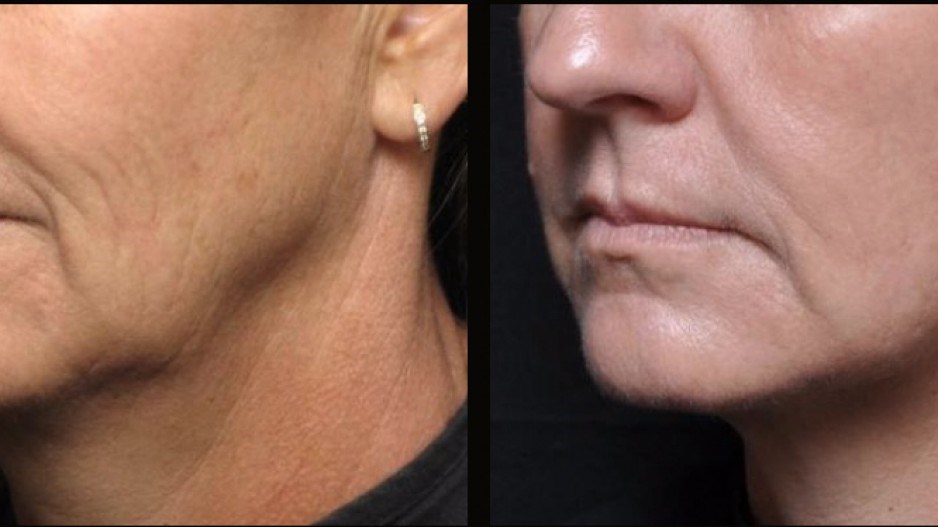In 2016, Brenda Green began to get uncomfortable with the bags under her eyes, which were unsightly and painful. She sought treatment through the medicare system but was told the procedure was cosmetic. Deciding to pay for the procedure herself, Green, 66, went to Dr. Ross Horton in Burnaby and says she was surprised and happy with the results.
“I was warned it would be painful with a black-and- blue face because they dig in and take out the fat, then cut beside the eyes to pull the skin back,” she explains. “But there was really no bruising at all and I was back to normal in about three weeks.
Green thinks it’s taken 35 years off her looks and wishes she had done it 25 years ago.
“I would recommend it to anybody,” she says.
Blepharoplasty – treatment done either above or below the eye – is just one of dozens of procedures that are being done in clinics around Vancouver to enhance looks or alleviate discomfort.
While Green’s surgery cost about $4,000, patients can pay upwards of $15,000 to take back the years.
Dr. Cameron Bowman, a clinical assistant professor in the division of plastic surgery at the University of British Columbia, and director of Fairview Plastic Surgery, says clinics can do everything from body re-contouring to facial rejuvination, but the majority of his older clients are looking at eye and facial treatments.
He estimates that 25 per cent of his clientele are in their senior years, and in general, he says, older patients are easier to work with.
Costs in Bowman’s clinic range from $3,600 for the upper eyelids to $10,000 for both eyes, upper and lower. A skin-only facelift would be $10,000 to $12,000, while a “dual plane” – where both the skin and muscles are lifted – would cost between $12,000 and $15,000.
Costs will also vary depending on whether local or general anesthetic is used.
Though plastic surgery can yield immediate, striking results, many patients opt for non-invasive procedures as they are less expensive and less painful, with shorter recovery times.
Vanessa Grutman, business director at Project Skin MD, says skin treatment, both within a clinic as well as ongoing, at home, can yield surprising results, especially for the older generation.
What she refers to as “injectable artistry” provides a “refreshed version of yourself.”
“There are no duck lips and puffy cheeks,” she says. “We allow people to age gracefully.”
The most significant treatments Project Skin delivers are Thermage, Ultherapy and laser treatment.
Thermage uses radio frequency energy within the skin’s collagen layer to promote “rebuilding and remodelling of collagen fibres.” It ranges from $2,000 to $3,500 and requires no down time, and results are seen within three to six months.
Ultherapy uses ultrasound to heat and contract collagen for skin lifting, especially around the neck, jawline and brow area.
“In both cases, patients are in and out and no one knows they’ve had the procedure,” says Grutman.
With laser therapy, a Fraxel laser is used to treat pigmentation, precancerous sun damage, scars and stretch marks. It requires the most down time – up to three weeks to allow the skin to heal – but can make skin look significantly younger.
Other popular non-surgical procedures include dermal fillers – Botox, which is often used on forehead lines, and hyaluronic acid, used in lips and cheeks. As we age, our skin loses the ability to retain water, Grutman explains. The acid attracts water that gives skin a plump look.
“Once you start, your skin won’t go back to a pre-filler situation,” says Grutman.
No matter what, taking care of your skin regularly as you age is the best thing you can do to prevent the signs of aging, Grutman points out. This can include having regular facials, using proper skin products, staying out of the sun and avoiding smoking.




